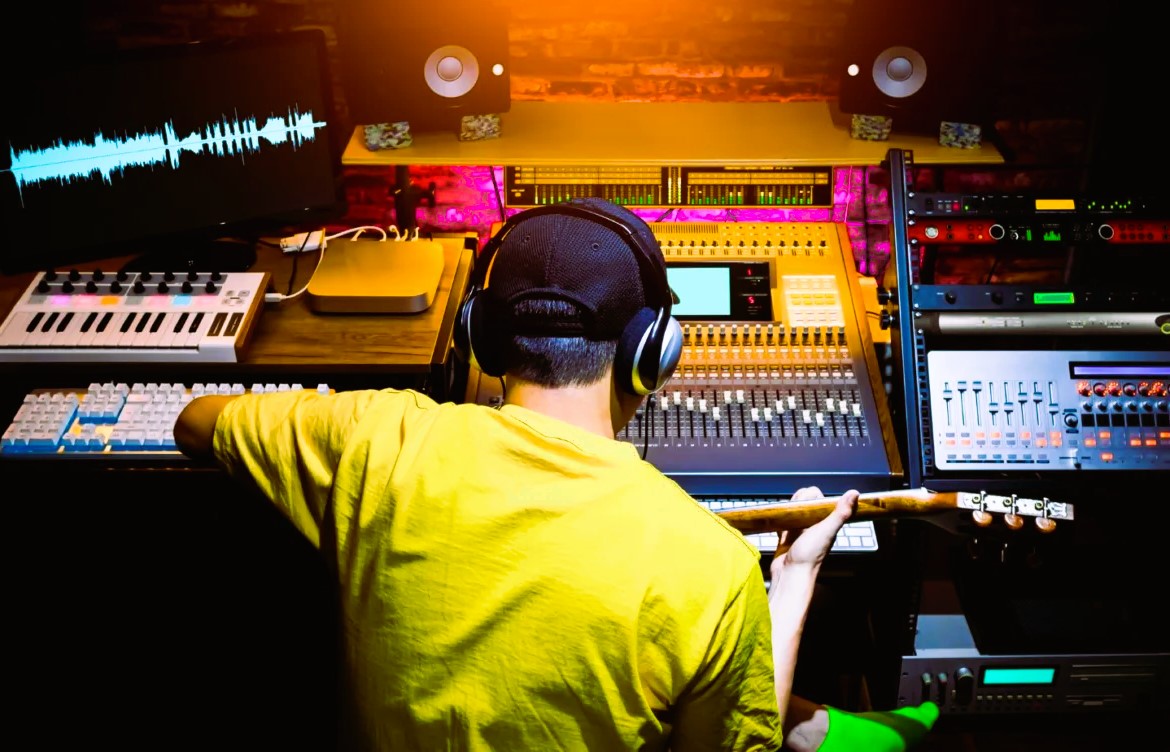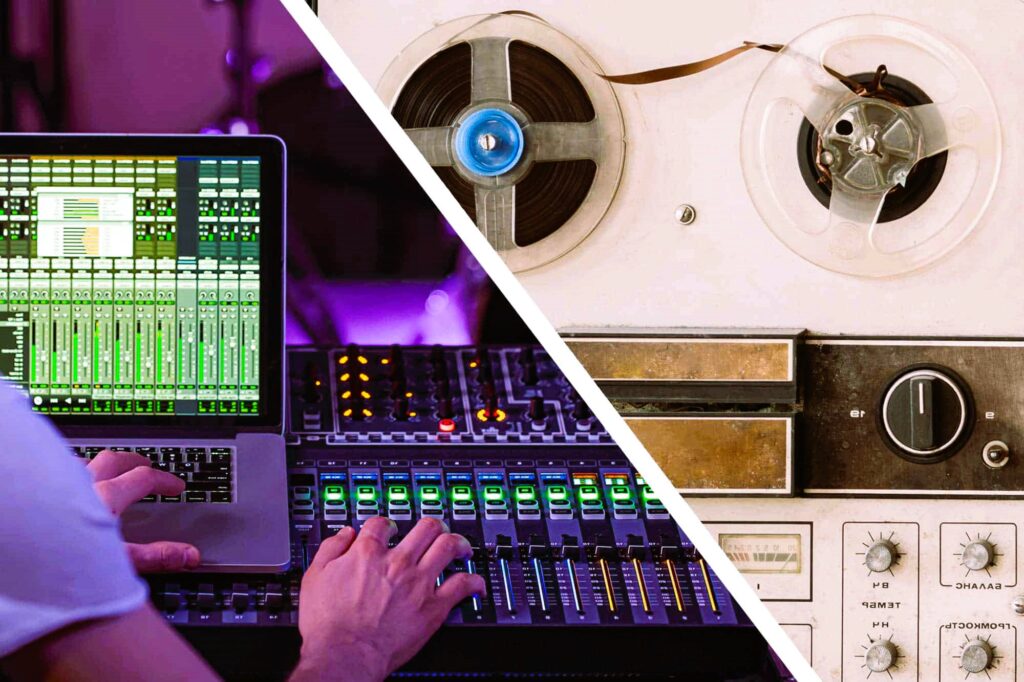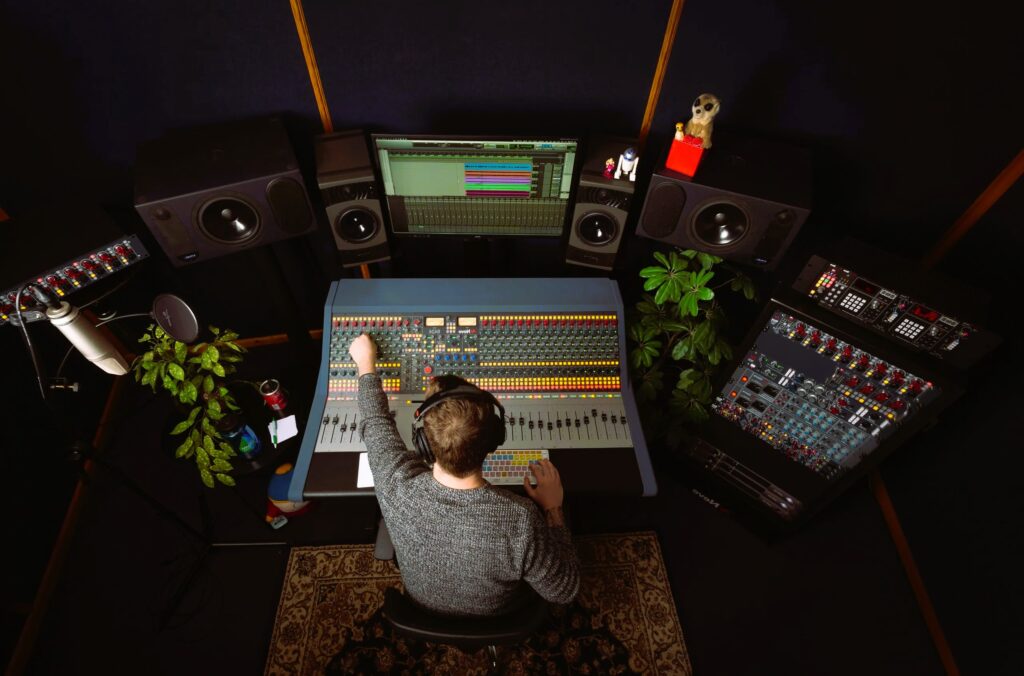
Music production has undergone a profound transformation over the past few decades, driven largely by advancements in technology. From the early days of analog recording to the rise of digital audio workstations (DAWs), technology has revolutionized the way music is created, recorded, and distributed. In this article, we’ll explore the evolution of music production technology and the impact it has had on the industry.
The Analog Era
Before the advent of digital technology, music production relied primarily on analog recording methods. Analog recording involves capturing sound waves directly onto physical media, such as magnetic tape or vinyl records. The process begins with the conversion of sound waves into electrical signals by microphones, which are then amplified and recorded onto tape using analog tape machines.
Analog recording offers a warm, rich sound quality that many musicians and audio engineers still prefer today. However, the process has several limitations, including the need for expensive equipment, limited editing capabilities, and the degradation of sound quality over time. Despite these drawbacks, analog recording technology dominated the music industry for much of the 20th century, shaping the sound of countless iconic albums and recordings.
The Digital Revolution

The advent of digital technology in the late 20th century marked a paradigm shift in music production. Digital recording, editing, and processing techniques offered unprecedented flexibility, efficiency, and creative possibilities for musicians and producers. Digital audio workstations (DAWs) replaced traditional tape machines, allowing users to record, edit, and mix music entirely within a computer-based environment. Navigation through contracts, royalties and copyrights in the world of music, more details here.
One of the key advantages of digital recording is its ability to capture and manipulate sound with pristine clarity and precision. Digital audio files can be endlessly copied, edited, and manipulated without any loss of quality, opening up new avenues for experimentation and creativity. Additionally, digital recording technology introduced a range of new tools and techniques, such as virtual instruments, MIDI sequencing, and software-based effects processing, further expanding the possibilities for music production.
The Impact on Music Production
The transition from analog to digital technology has had a profound impact on every aspect of the music production process. For musicians and producers, digital technology offers unparalleled flexibility and control over every aspect of the recording and mixing process. From the ability to easily correct mistakes and fine-tune performances to the endless array of virtual instruments and effects plugins, digital recording has democratized music production, making it more accessible to aspiring artists and creators.
Furthermore, digital technology has revolutionized the way music is distributed and consumed. The rise of digital streaming platforms like Spotify, Apple Music, and YouTube has fundamentally changed the way we access and interact with music, allowing listeners to stream millions of songs instantly from their smartphones or computers. This shift towards digital distribution has disrupted traditional music industry models, leading to new challenges and opportunities for artists, record labels, and streaming services alike.
The Role of Standards Organizations

Standards organizations like the International Organization for Standardization (ISO) and the Institute of Electrical and Electronics Engineers (IEEE) play a crucial role in shaping the future of music production technology. By establishing industry standards and protocols for digital audio formats, file compression algorithms, and audio data interchange, these organizations ensure interoperability and compatibility across different hardware and software platforms.
For further reading on the influence of technology on music production, you can explore the following resources:
- Wikipedia: Digital Audio Workstation
In conclusion, the influence of technology on music production has been profound, shaping the way music is created, recorded, and distributed. From the analog era to the digital revolution, advancements in technology have empowered musicians and producers to push the boundaries of creativity and innovation, leading to new forms of expression and artistic achievement. As technology continues to evolve, the future of music production promises to be even more exciting and transformative.



